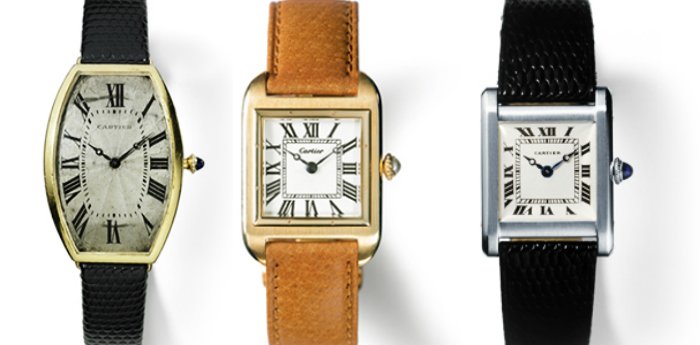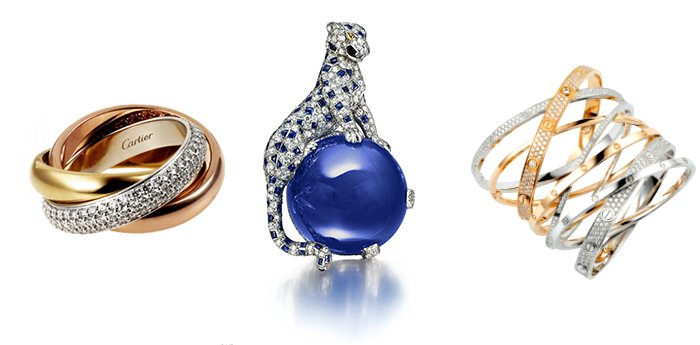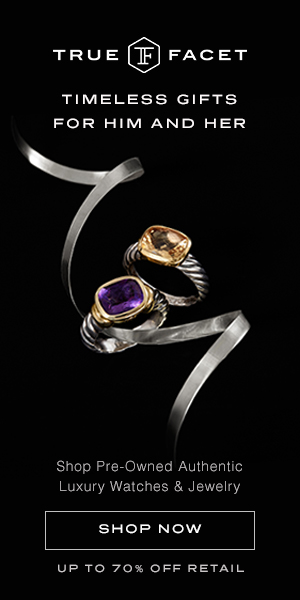Cartier Style Through the Ages
Cartier is one of the greatest and oldest jewelers in the world. Their designs have undoubtedly influenced jewelers of the past and present and fashions and styles throughout its 169-year history. As a trendsetter and ambitious jewelry house, Cartier has designed some of the most iconic watches and jewelry pieces from 1837 to present day. Check out the most influential Cartier styles through history.
The Beginning

When Cartier was first established, the Victorian era was just beginning and a jewelry preferred the elaborate and romantic. During this time, until the end of the century, Cartier produced pieces featuring gold, enamel, cameos, vivid gemstones, floral patterns and animals. These ornate designs were often inspired by the architecture of the era.
By the end of the century, the era of Art Nouveau was gaining favor among art collectors and purveyors of quality artisanal goods. Louis Cartier designed his own style of the jewelry trends and at the same was the first to use platinum in jewelry making. The new metal allowed the creation of intricate, sparkling designs known as the Garland Style. This also marked the beginning of Cartier’s recognition and prestige.
At the turn of the 20th century, Cartier began experimenting in a different kind of design. Still inspired by the architecture of the time, Cartier began creating pieces in what’s now known as the Art Deco style. Geometric shapes and angular lines defined this style along with bursts of color contrasting with platinum.
Essential Watches of the Early 20th century

Not only was Louis Cartier changing the world of jewelry, but at the beginning of the 20th century, he was also changing the face of watchmaking. Cartier is often credited as one of the first designers of the wristwatch. The designs of the early 1900s proved to be so timeless that they are still produced to this day as some of Cartier’s best sellers.
According to Cartier, in 1904, pilot Alberto Santos Dumont has confided in Louis Cartier that he needed a timepiece he could use to record flight times as a pocket watch was too inconvenient. Cartier then developed the Santos, which sold in 1911. Prior to the Santos, any wrist watch that existed was really an afterthought of a pocket watch — the strap merely attached simply. The Santos was the first purpose-designed and modern example of the wristwatch.
Cartier began designing wristwatches in unique shapes and sizes to influence the standard in wristwatch design through history. In 1906, Louis Cartier designed the tonneau shaped case, then the square case and tortue shapes by 1912. At the time, most watchmakers valued function over form, but at Cartier, both were viewed as necessary for an adequate timepiece.
Finally, in 1917, Cartier designed one of its longest-lasting collections with the Tank model wrist watch. This piece was inspired by the new army tanks that were developed for battle during World War I. This iconic design has been re-imagined many times over with the introduction of new models like the Tank Francaise and Tank Americaine.
Jewelry Traditions Past and Present

Cartier has created several collections and design motifs that have become brand icons, timeless and classic no matter the decade or era. The panther has become the mascot of the jeweler, a categorically Cartier symbol and design motif. Introduced in 1914, the panther motif quickly spread to all aspects of design. From watches to bracelets, to earrings and brooches, the
alluring creature has been portrayed.
In 1924, Cartier introduced the first piece of the Trinity collection. Considering the elaborate jewelry designs of the time, the Trinity collection was one so unlike Cartier, yet unmistakably Cartier in its symbolism and elegance. The collection features three shades — white, yellow and rose — of gold intertwined to symbolize fidelity, friendship and love.
Finally, in 1970 Cartier released one of its most successful pieces with the Cartier Love bracelet. This piece, designed by Aldo Cipullo, like the Trinity collection, was designed to symbolize a faithful and dedicated love. The piece is meant to be secured by screw to the wearer’s wrist by a loved one as a symbol of commitment. The collection remains a global success as one of the most worn and most recognized pieces of fine jewelry today.
Photo Credit: swissclassicwatches.com / cartier.com / forbes.com







